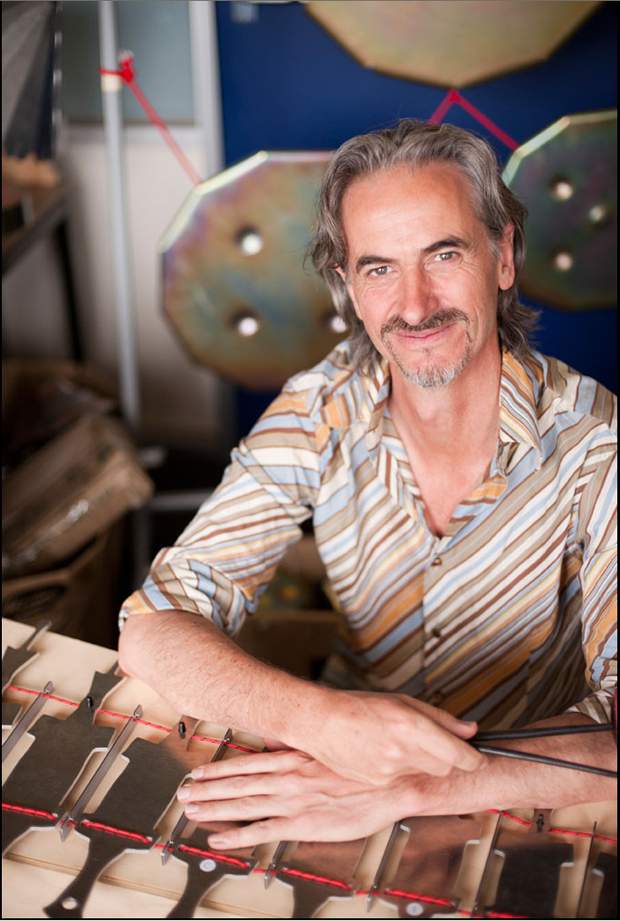Melbourne brain study: Are musicians born or made?


MELBOURNE -- Neil McLachlan says he wants to do for music what Apple did for the personal computer.
For over two decades, the scientist, artist and university professor has worked to increase music participation.
"Only five per cent of people (in the West) who go through tertiary music education end up playing music,” the University of Melbourne associate professor said.
“On the whole, music education has created an elitism around music performance that has caused the normal person to feel that they can’t play,” he said.
McLachlan works in a multidisciplinary team at the university's Music, Mind and Wellbeing (MMW) Center, an initiative that aims to understand the relationship between our brains and music.
"Music is to mental health what sport is to physical health” is a tagline often employed by McLachlan when talking about music education.
McLachlan is now in the process of designing an ensemble of new instruments (four so far have been patented) that he claims anyone (even non-musicians) can play within an hour of starting.
Still in prototype phase, the percussion instruments (bells, drums, gongs etc.) produce clear and harmonious sounds and are designed to be played individually or put together like a whole orchestra.
The new musical instruments are an extension of the remarkable Federation Bells, a giant sound installation featuring 39 upturned bells that are played via computer (MIDI) controlled hammers.
Developed by McLachlan in 2000 for the centenary celebrations of Australia's Federation, the Federation Bells are the first percussion instruments in history to have harmonic overtones.
After achieving this sound design breakthrough, McLachlan started thinking about how much more affordable instruments could be designed.
The engineering design question inevitably led him to a neurobiological question about music: “How do we know what is a good musical sound?"
In 2006, McLachlan teamed up with Associate Professor Sarah Wilson from the School of Psychological Sciences, to carry out neuroscience research into how our brains received and processed sound.
McLachlan and Wilson’s research led then to develop a revolutionary new theory of how the auditory system works. This new theory proposes that animals first recognize the sound sources before processing other features such as the sound’s pitch or location.
"This makes sense from an evolutionary point of view because the most important thing an animal needs to know is whether they can hear predators or preys," McLachlan explained. "It also makes sense from an information processing point of view because we can use prior experience to adapt our hearing to new circumstances."
Since sound recognition involves developing long-term memories for sounds, this theory helps to explain why different individuals can have such different reactions to sound, especially music.
To test this even further, McLachlan conducted a controlled study involving the Indonesian gamelan, a percussion instrument known to sound dissonant to the Western ear.
In the gamelan study, one group of Western musicians who had learnt to play gamelan instruments were asked to find the pitch in those instruments. Another group of Western musicians who had never encountered the gamelan were asked to do the same.
The results revealed that people who played the gamelan could find the pitch of the gamelan instruments very accurately and found it to be quite harmonious, whereas, the Western musicians who were untrained in the gamelan could not.
The study demonstrated that the perception of pitch, harmony, scale and rhythm are learnt within particular musical cultures, which suggests that musical structures are not physically or biologically determined.
“We can recognize sounds because that’s what we have to do in the real world, but to accurately pitch sound requires training,” McLachlan said.
This refined pitch processing is very involved, but according to McLaclan and Wilson, we all have the ability to build up these memories for sound -- neuroscientists refer to this ability as 'brain plasticity.'
The study is a revelation for many people who have long held the belief that there are some people who are simply born with the ability for music.
McLachlan hopes that this new-found insight into our auditory system, along with his new instruments, will increase music participation and make playing music something ordinary people do as regular as exercise.
Photo: Neil McLachlan.
This post was originally published on Smartplanet.com
